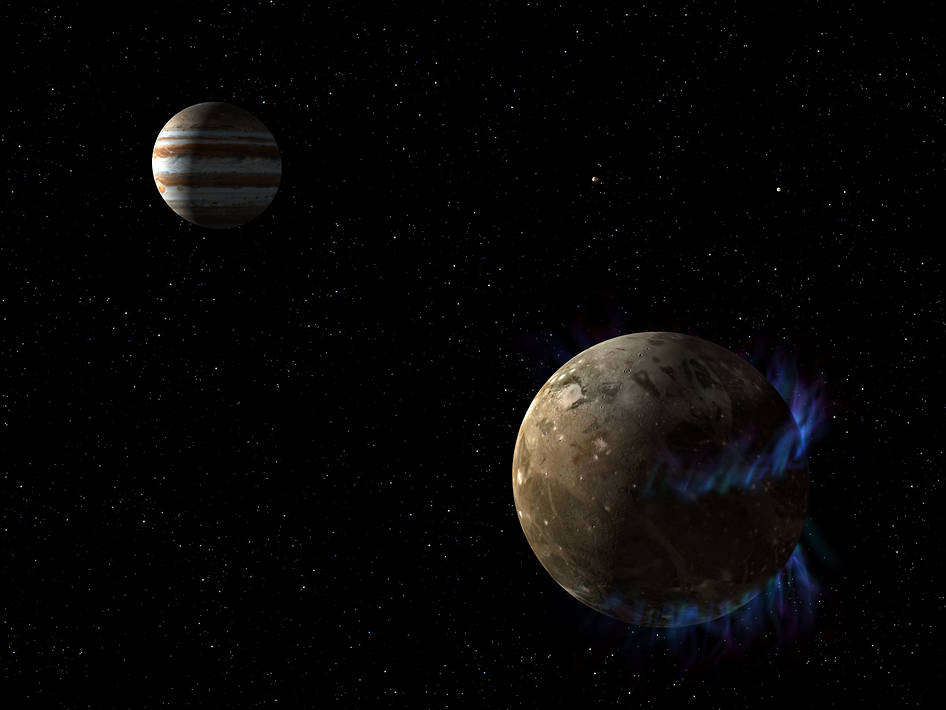Ganymede Orbits Jupiter: NASA Image of the Day
Well I was going to do my typical snarky/silly intro here but I honestly couldn’t think of one. And look c’mon, look how cool this picture is! Yes, yes I know it’s just an “artist’s concept” and not really an “actual” image but seriously, who cares? This is very, very cool and I personally would love to be able to stand on another world and look up at the giant, striped Jupiter overhead. And it could happen…aside from the fact that the technology is not quite there yet and I have an immense fear of heights and enclosed spaces…but still it’s not beyond the realm of possibility.
In reality NASA does believe we will find sings of alien life by as early as 2025, and our tech is really not that far off, all it would take is money. So if we could all down here on Earth just get our shit together and stop spending money on ways to fight each other we could be spending that cash on exploring the beauty of space. And maybe we could learn something, or at least have the best vacation ever. Okay, I’m getting down off the soapbox now. Believe me I could go on, maybe another day.
Searching for Water in the Solar System and Beyond
As NASA missions explore our solar system and search for new worlds, they are finding water in surprising places. Water is but one piece of our search for habitable planets and life beyond Earth, yet it links many seemingly unrelated worlds in surprising ways.
Perhaps the most surprising water worlds are the five icy moons of Jupiter and Saturn that show strong evidence of oceans beneath their surfaces: Ganymede, Europa and Callisto at Jupiter, and Enceladus and Titan at Saturn. Scientists using NASA’s Hubble Space Telescope recently provided powerful evidence that Ganymede has a saltwater, sub-surface ocean, likely sandwiched between two layers of ice.
In this artist’s concept, the moon Ganymede orbits the giant planet Jupiter. The Hubble Space Telescope observed aurorae on the moon generated by Ganymede’s magnetic fields. A saline ocean under the moon’s icy crust best explains shifting in the auroral belts measured by Hubble.
More: The Solar System and Beyond is Awash in Water
Courtesy of NASA.org | Image Credit: NASA/ESA












Likhon chowdhury says:
Conor says:
Andy Garcia says: